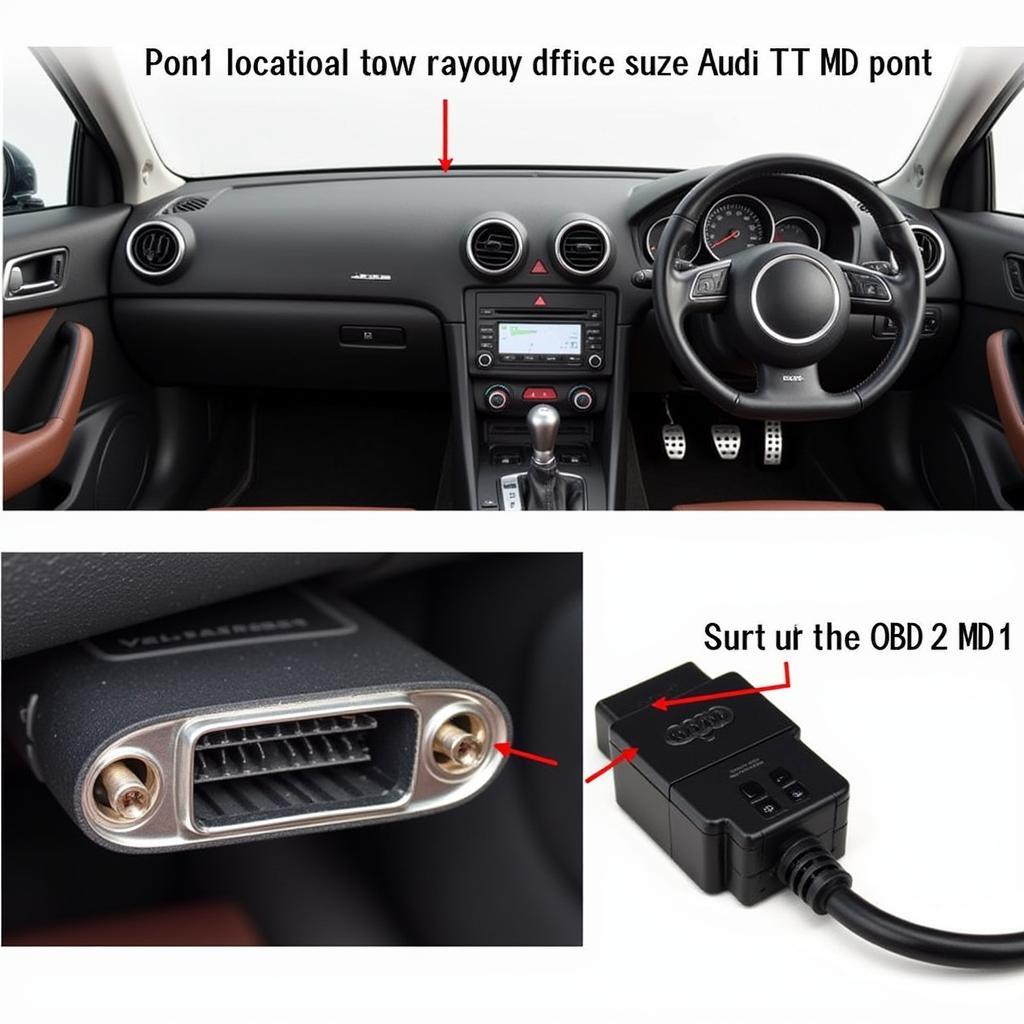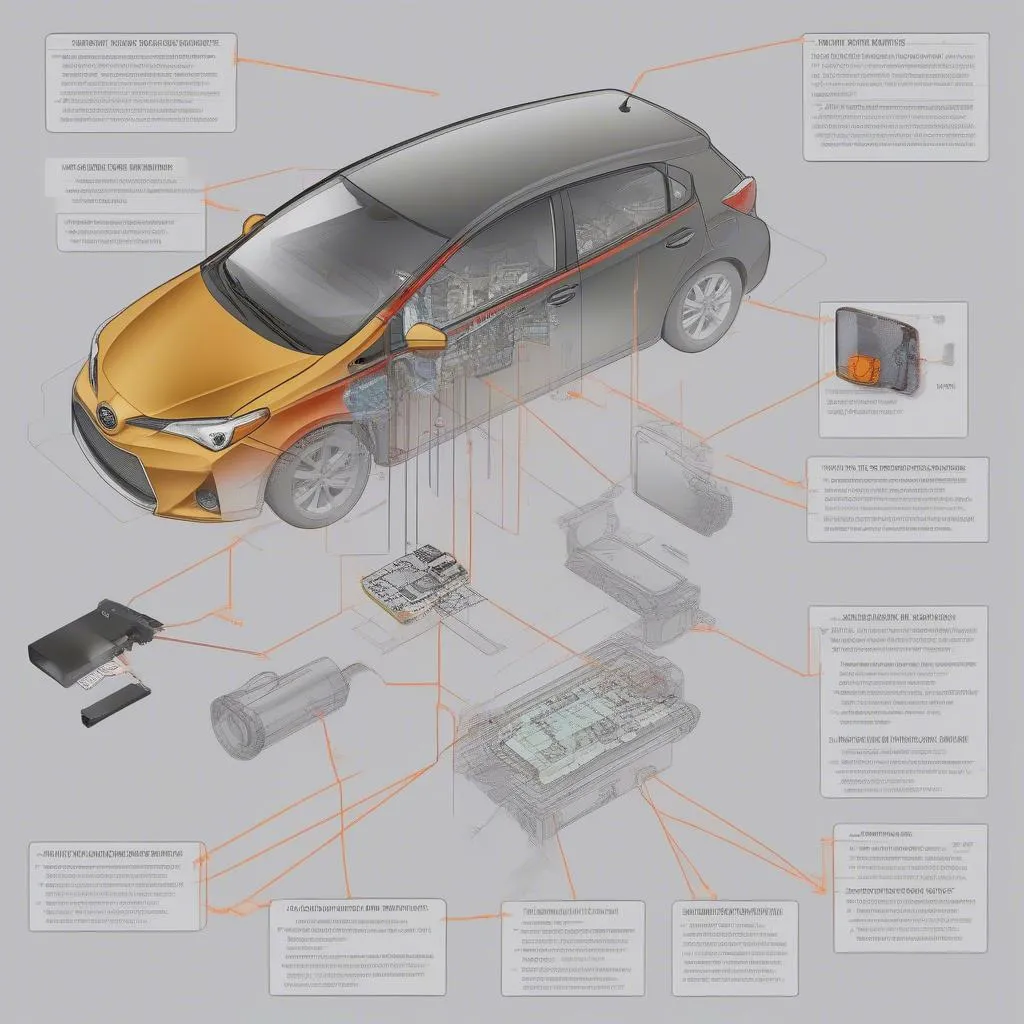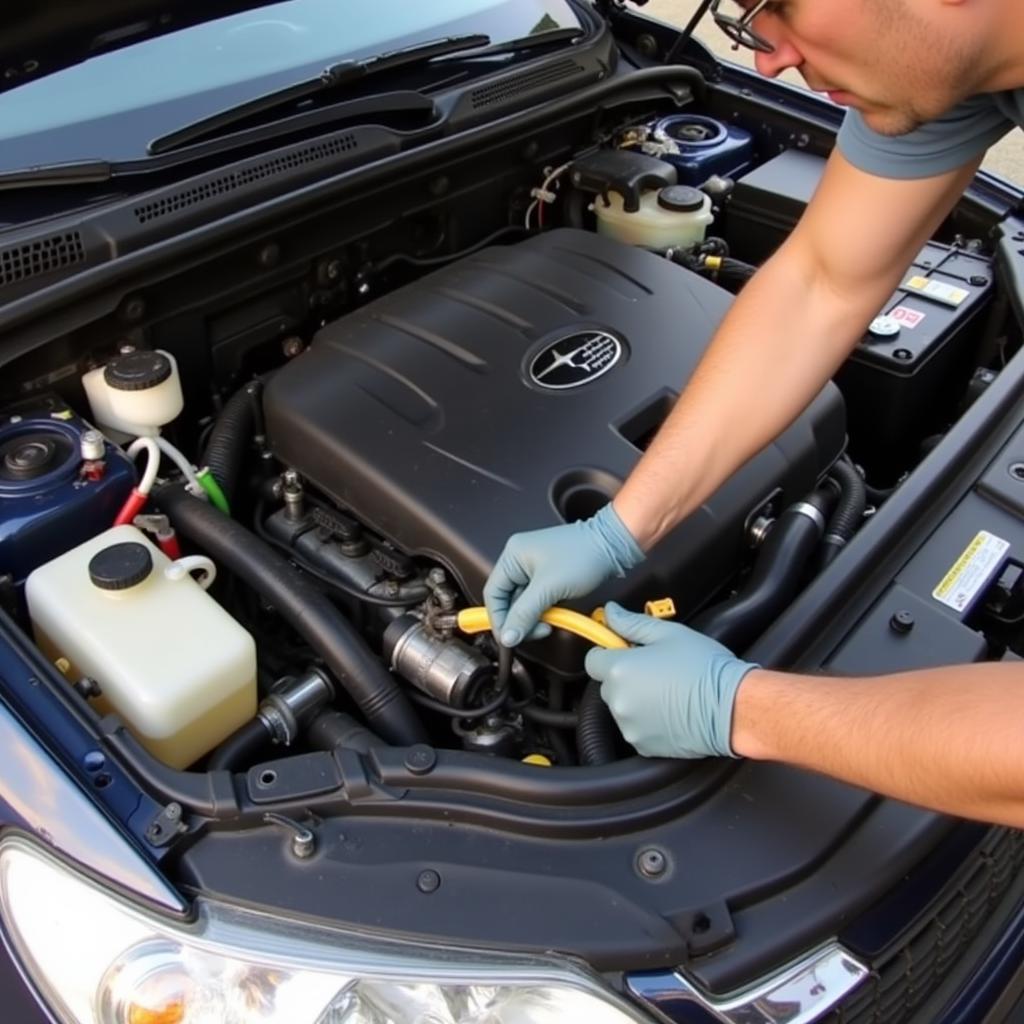The Audi TT Mk1 is a legendary sports car, but like any vehicle, it can experience its share of issues. One common problem that often leaves owners scratching their heads is the dreaded brake warning light. Seeing this light illuminate on your dashboard can be unnerving, but it’s essential to understand that it doesn’t always signal a catastrophic failure. This guide delves into the common causes of brake warning lights on the Audi TT Mk1 and provides you with the knowledge to diagnose and address the issue effectively.
Understanding Your Audi TT Mk1 Brake Warning System
The brake warning light on your Audi TT Mk1 is part of a crucial safety system designed to alert you to potential problems with your braking system. It’s vital to remember that this light can indicate several issues, from minor concerns to more severe problems requiring immediate attention.
Common Causes of Brake Warning Lights
1. Low Brake Fluid Level:
One of the most common and straightforward reasons your brake warning light might be on is a low brake fluid level. Brake fluid is the lifeblood of your braking system, transmitting the force from your foot on the pedal to the brake calipers at each wheel.
2. Worn Brake Pads:
Your Audi TT Mk1 is equipped with brake pad wear sensors. When the brake pads wear down to a certain point, these sensors trigger the brake warning light to let you know it’s time for a replacement.
3. Faulty ABS Sensor:
The Anti-lock Braking System (ABS) is a critical safety feature that prevents your wheels from locking up during hard braking. A faulty ABS sensor can disrupt the system’s functionality, triggering the warning light.
4. Brake Light Switch Malfunction:
The brake light switch, located behind your brake pedal, is responsible for activating your brake lights when you press the pedal. A malfunctioning switch can disrupt the brake light circuit, potentially triggering the warning light on your dashboard.
5. Issues with the Master Brake Cylinder:
The master brake cylinder acts as the central hub for distributing brake fluid to the wheels. If there’s an internal leak or a problem with the master cylinder itself, it can lead to a drop in brake fluid pressure and activate the warning light.
 Audi TT Mk1 Brake Fluid Reservoir
Audi TT Mk1 Brake Fluid Reservoir
Diagnosing the Problem: A Step-by-Step Approach
Before you start tearing into your car’s braking system, it’s essential to diagnose the root cause of the warning light. Here’s a step-by-step approach:
-
Check Your Brake Fluid Level:
This is the first and easiest step. Safely park your car on a level surface, open the hood, and locate the brake fluid reservoir. Check the fluid level against the minimum and maximum markings on the reservoir. If the level is low, adding the correct type of brake fluid might be a quick fix. -
Inspect Your Brake Pads:
If your brake fluid level is fine, the next step is to check the condition of your brake pads. You can visually inspect them by looking through the spaces between the wheel spokes. If the brake pad material is significantly worn down or you see metal-on-metal contact, it’s time for a replacement. -
Scan for Fault Codes:
Modern cars like the Audi TT Mk1 have onboard diagnostic systems that store fault codes when a problem arises. You can use an OBD-II scanner to read these codes, providing valuable insights into the issue.
 Audi TT Mk1 OBD2 Port Location
Audi TT Mk1 OBD2 Port Location
- Seek Professional Help:
If you’ve exhausted basic troubleshooting steps and the warning light persists, it’s time to seek help from a qualified mechanic specializing in Audi vehicles. They have the expertise and tools to diagnose and repair complex brake system issues.
Remote Diagnostics and Software Solutions for Audi TT Mk1 Brake Issues
In today’s technologically advanced world, remote diagnostics and software solutions are becoming increasingly prevalent in the automotive industry. For certain brake-related problems, these solutions can provide efficient and convenient troubleshooting and repair options.
How Remote Diagnostics Work
Remote diagnostics involve connecting your Audi TT Mk1 to a specialized software program via the OBD-II port. This program allows trained technicians to access your vehicle’s computer system remotely, retrieving diagnostic data and fault codes.
Benefits of Remote Diagnostics and Software Solutions
- Convenience: You don’t have to physically take your car to a mechanic for a diagnosis, saving you time and effort.
- Faster Turnaround Times: Remote diagnostics can often identify problems more quickly than traditional methods, leading to faster repairs.
- Cost-Effectiveness: In some cases, remote diagnostics can be more cost-effective than traditional diagnostic methods.
 Remote Diagnostics Audi TT Mk1
Remote Diagnostics Audi TT Mk1
Conclusion
The brake warning light on your Audi TT Mk1 should never be ignored. While it can indicate a minor issue, it’s crucial to diagnose and address the problem promptly to ensure your safety and prevent further damage to your braking system. By understanding the potential causes and following the troubleshooting steps outlined in this guide, you can approach the issue with confidence. Remember, if you’re unsure about any aspect of diagnosing or repairing your vehicle’s braking system, it’s always best to seek professional assistance from a qualified Audi mechanic.


